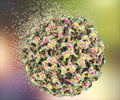Study says, high-coverage human papillomavirus (HPV) vaccinations among adolescents and young women may result in a rapid reduction of genital warts and cervical cell abnormalities
In a new study published online February 5 in the Journal of the National Cancer Institute, researchers report that high-coverage human papillomavirus (HPV) vaccinations among adolescents and young women may result in a rapid reduction of genital warts, cervical cell abnormalities, and diagnostic and therapeutic procedures. Some of these genital abnormalities are precursors of cervical, vulvar, and vaginal cancers.
This study was undertaken to determine if the administration of the HPV vaccine reduced the risk of cervical intraepithelial neoplasia (CIN), a precursor of cervical cancer; external anogenital and vaginal lesions (or external genital lesions) of any grade severity; Pap test abnormalities; and procedures such as colposcopy and definitive therapy or excision of lesions.Nubia Muñoz, M.D., of the National Institute of Cancer, Bogotá, Colombia, and colleagues studied 17,622 women aged 15 years who were enrolled in one of two randomized, placebo-controlled, efficacy trials for the HPV6/11/16/18 vaccine. All women underwent cervicovaginal sampling and Pap testing.
In the group representing uninfected women, vaccination was up to 100% effective in reducing the risk of HPV16/18-related high-grade cervical, vulvar, and vaginal lesions and the risk of HPV6/11-related genital warts. In the group representing the general population, vaccination reduced the risk of any lesion, genital warts, Pap abnormalities, and definitive therapy, irrespective of HPV type. The reduction in risk was statistically significant.
"Our results provide strong evidence to suggest that the ongoing HPV vaccination programs in adolescent girls and young women will result within a few years in a notable reduction of genital warts, cervical cytological abnormalities, and diagnosticand therapeutic procedures related to precursor lesions in the cervix, vulva, and vagina," the authors write. "It is anticipated that these reductions will eventually translate into lower rates of cancer of the cervix, vulva, and vagina."
Source-Eurekalert
RAS














